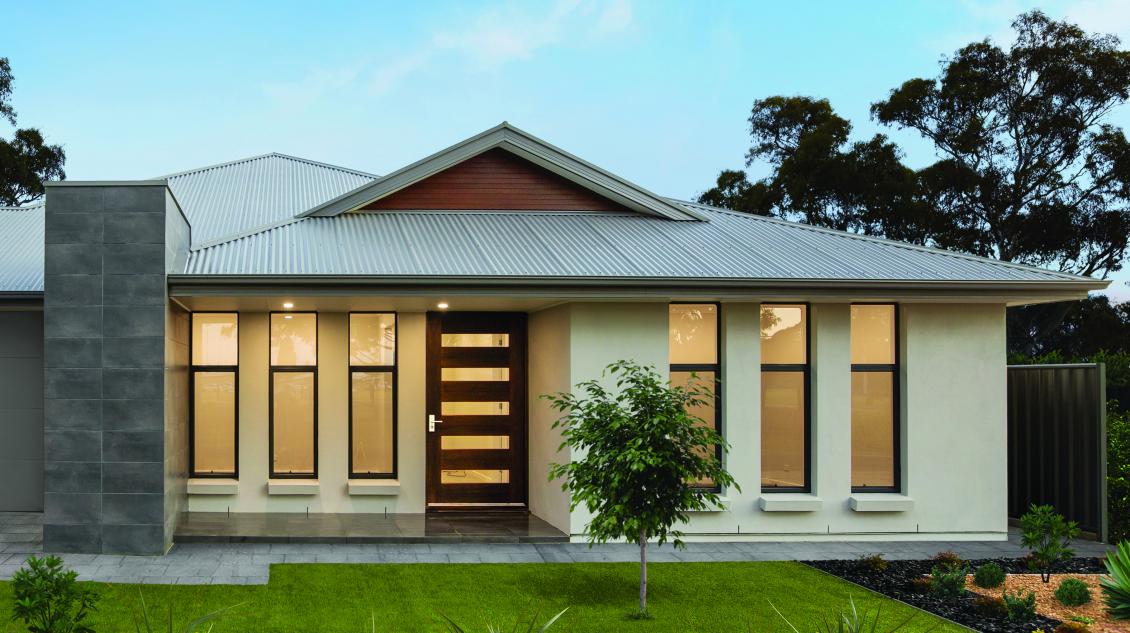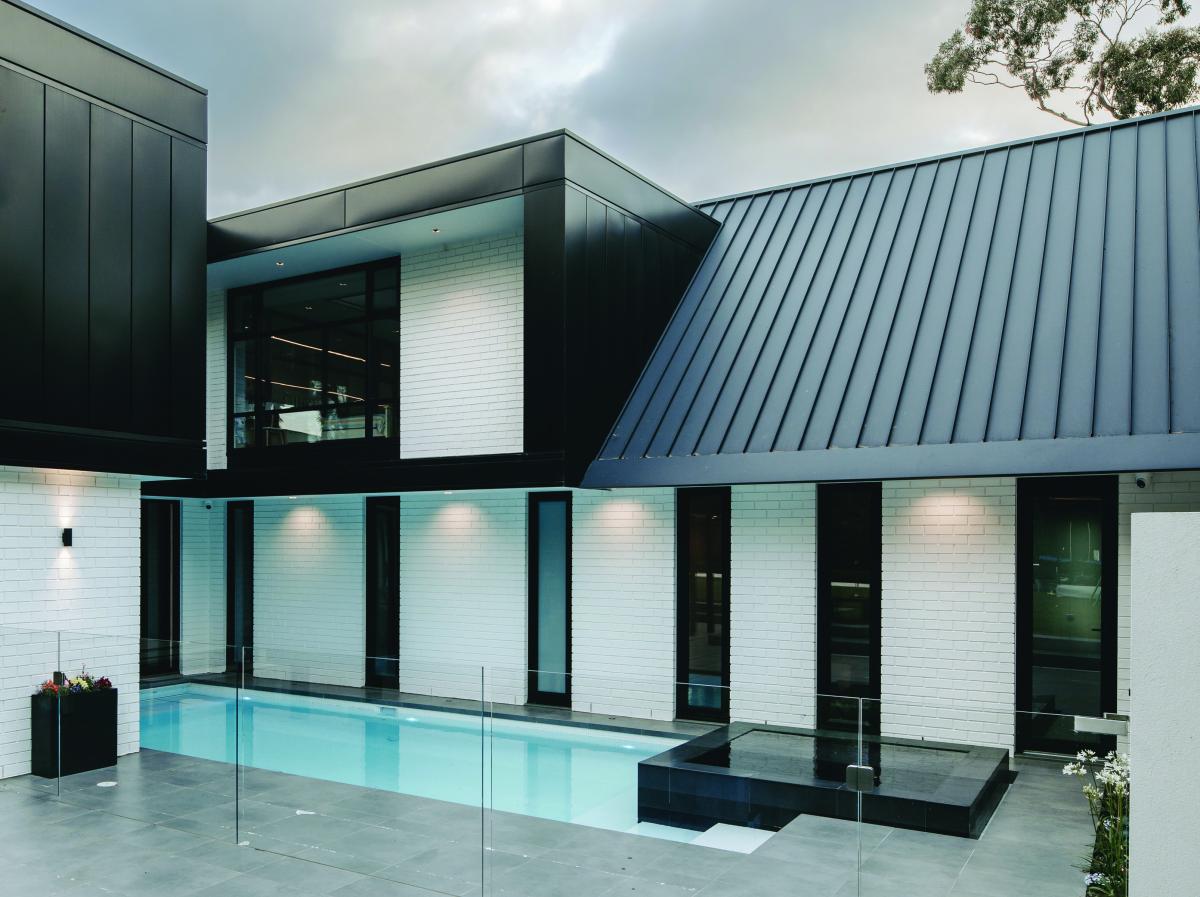THE RIGHT WAY TO REROOF WITH FIELDERS
After enduring years of harsh Australian weather, the roofs of our homes, factories, and other buildings might need replacing. As a builder, you may find yourself tasked with replacing an older tiled roof with a new steel roof. Your peace-of-mind is assured by choosing a 100% Australian-made Fielders® roofing product made from COLORBOND® steel.
Fielders manufacture a wide range of roofing (and walling) products, ranging from iconic S-Rib™ Corrugated roofing to the more contemporary ‘rib and pan’ architectural designs of the Finesse® range. With up to 40 COLORBOND® steel colours available, including Metallic and Matt finishes, there's also a colour option available to match any project.
Fielders® steel roofing is known for its durability and being light weight makes it easy to manage and install. The Fielders® range also offers both pierced and concealed fixing styles, ensuring the finished roof looks just as your clients envision. To complete the aesthetic, Fielders also offers a range of matching fascia and rainwater products, giving homeowners the freedom to mix and match colours to their liking.
Once you've decided on a Fielders® roofing product, following some simple guidelines will help you achieve a top-quality installation that will satisfy your clients. Here are some important tips to keep in mind.
BEFORE YOU BEGIN
Handling and Storage
Prior to installation, Fielders® products should always be kept dry during storage. If materials need to be stored on-site, keep them off the ground on timbers or similar supports, and protect them with a tarp. Should the sheets get wet, unpack them immediately, separate them and allow them to dry. Wipe away any surface moisture with a clean cloth and leave them to air dry completely.
Fasteners and Accessories
For pierce fixing, ensure that all screws come with rubber sealing washers made from EPDM or an equivalent material, free from carbon fillers.
Choose fasteners that match the durability of your roof sheeting and meet the standards of AS3566 Class 3 at a minimum. (AS3566 is a performance standard that defines the minimum coating thickness required for fasteners, ranging from interior environments (Class 1) to severe marine environments (Class 4)).
Brickwork Cleaning
Make sure that any brickwork located above or next to the roof area is cleaned before installing the roof and gutters.
DURING INSTALLATION
Material Compatibility
Always opt for coated steel purlins (or battens) to prevent direct contact between Fielders cladding and bare steel or treated timber.
Walking on Roof Sheets
When walking on the roof, wear clean, soft-soled shoes. Though they may not be fashionable, Dunlop Volley shoes with natural rubber soles are ideal for this. Keep your weight evenly distributed across your feet to avoid slipping on the new sheets.
Wherever possible, walk along the purlin (batten) lines, and be sure to follow all relevant safety regulations concerning working at heights.
Cutting Sheets On-Site
Sheets can be supplied cut-to-length, however if you need to cut sheets on-site, opt for metal blades rather than carborundum disc angle grinders. Metal blades produce fewer hot metal particles and leave fewer burrs on the cut edges, reducing the risk of damage.
Applying Sealants
Some areas of the roof will require sealants. Use a neutral cure silicone rubber sealant with strong adhesion to the sheet surface, water resistance, and non-corrosive properties. Choose one that can withstand extreme temperatures, remains flexible, and has high UV resistance.
Before applying the sealant, you can clean the cladding surface with white spirits such as Shell X-55.

FINISHING UP
Removing Debris
After installation, promptly remove any metal scraps or shavings, pop rivet mandrels, and excess fasteners from the roof. If these are left behind and exposed to moisture, rust stains may form. Don’t forget to clear the gutters of any debris as well.
Handling Other Trades
Any pipes or roof penetrations made from copper or lead should be post-painted to prevent metallic copper ions from depositing on the roof surface, which could lead to rapid corrosion.
Any mortar or concrete that lands on the roof sheets should be removed immediately.
Cleaning
For cleanup, use only non-ionic detergents or mild kitchen cleaners. Apply them with a soft cloth, mop, or a soft nylon bristle brush, and follow up with a thorough rinse using clean water.
As you wrap up your roofing project with Fielders® products, remember that attention to detail in handling, installation, and clean-up is key to ensuring a durable and aesthetically pleasing result. By following the guidelines and tips provided, you can be confident in delivering a top-quality roof that will stand the test of time and satisfy your clients. With the right preparation and care, Fielders® roofing products will not only protect but also enhance the appearance of any building, making it a reliable choice for all your roofing needs.
For more information about Fielders comprehensive range of steel building products including roofing, walling, rainwater goods, structural products and more, visit fielders.com.au
FIELDERS
Fielders has been supplying the Australian building and construction industry with a range of quality steel building products for over 115 years.
Fielders manufactures an extensive range of steel building products and solutions including KingFlor® composite steel formwork, FreeForm™, ARAMAX® and Finesse® roofing and walling systems, Endurance® sheds and structures, Centenary® patios, carports and verandahs and Dominator® fencing and screening.
